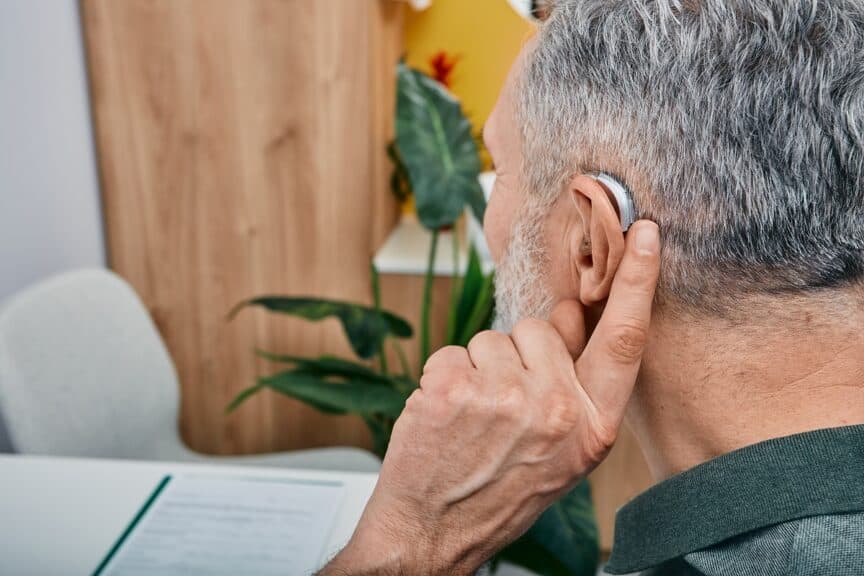- How to Care for Infants With Hearing Loss - April 15, 2024
- Hearing Aid Tips for Runners - April 5, 2024
- Overcoming Misconceptions Around Hearing Aids - March 27, 2024
Whether you are new to wearing hearing aids or you’ve just purchased new ones, there is always a learning curve while adjusting to new hearing devices. Unlike glasses, where you can see immediately when putting them on, hearing aids require a bit more time and commitment. To ease that process, it is important to get to know your hearing aids and what they can do for you.
Type of Hearing Aids
Hearing aids come in many different shapes and sizes. Determining which fit is right for your lifestyle is a vital part of choosing the type of hearing aid.
Behind the ear (BTE) hearing aids have the primary sensitive pieces of technology sitting behind or on the back of the outer ear. They have a small wire that transmits sound from the microphone on the outer ear to the dome or mold receiver in the ear. BTE hearing aids typically experience less wear and tear as the main piece of technology is not exposed to the ear wax inside the ear.
In the ear (ITE) hearing aids house the entire device in the ear canal. ITE hearings can be further broken down into in the canal (ITC) or completely in the canal (CIC) based on their size and how deeply they sit in the ear canal. Because of this, they are more exposed to ear debris such as dirt and wax and generally require more care.
Caring for Your Hearing Aids
Hearing aids are a significant investment and how you care for them will greatly impact their longevity.
- Cleaning- Clean hearing devices every night when you remove them. Use the tools provided by your hearing health provider to brush away any excess ear wax or dirt from the microphone and a loop pick to remove any wax from other crevices. You should also use a soft, dry cloth to wipe them off.
- Storage- Hearing aids should be stored in a hard, waterproof case when not in use. Do not leave the on the counter where a child or pet can reach them. If you live in a humid climate, a dehumidifier or dry aid kit may be a good idea for storage overnight.
- Batteries- Today’s hearing aids have both replaceable and rechargeable batteries. Make sure to talk to your hearing health provider about how to replace or charge them.
What to Expect with Hearing Aids
When wearing your new hearing aids for the first time, even if you’ve worn hearing aids for a long time, there will be an adjustment period. Knowing what to expect and how to manage your transition into hearing aids is vital to compliance with wearing them.
- Fit and Feel- Hearing aids should fit comfortable in the ear. They should not feel too big and they should not feel too small where they may fall out if bumped. Hearing health providers typically uses ear molds to get your exact sizing and then hearing aids are made to fit your unique hear. If they do not fit or feel like they are irritating your skin in certain places, speak to your provider about resizing.
- Sounds- As mentioned previously, hearing aids do not “fix” your hearing. They require commitment and practice to gain their full benefit. There are several strategies to start wearing hearing aids. Some audiologists recommended to start by wearing them all day every day and others recommend to start for a few hours and add time each day. Speak to your provider about the best method for you.
- Extras- Technology is advancing every day. Hearing aids now have many special features that can be added or even have become standard. Some hearing aids can be adjusted through an app on your phone. They have settings for specific environments, such as party mode, that can reduce background noise and focus in on the person who is talking. Furthermore, Bluetooth technology allows users to listen to phone calls or music with other Bluetooth compatible devices.
The technology involving hearing aids has advanced drastically in recent years and continues to do so. Speak with your hearing health provider to better understand all of your device’s capabilities as well as general care for them in order to improve your hearing aid experience.

